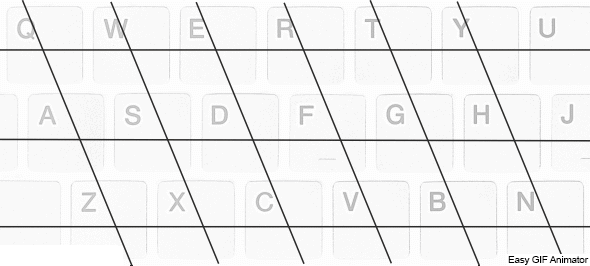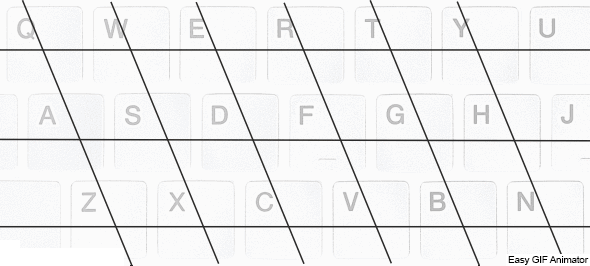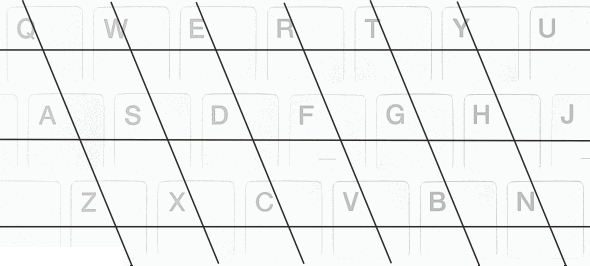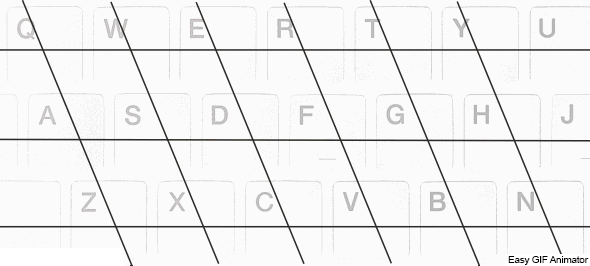N-Key Rollover (NKRO) and USB?
The USB, in contrast to the active, interrupt-based PS/2 port, works exactly the opposite way in passive polling mode. In contrast to PS/2, there are no more directly triggerable interrupts for a device, but the computer periodically polls all connected devices within a certain time interval to see if new information is available. This time interval is defined in the so-called polling rate. The keyboard normally uses the highest possible value of 1000 queries per second (1000 Hz) for this. The keyboard controller stores all events in a buffer as a kind of interrupt packet, in which the sequence of the events is stable, but which can only contain a certain amount of information in terms of size.
Since we now know that the packet size is limited, normally only the simultaneous transmission of a maximum of 6 key events would be possible. In order to persuade the USB to a larger amount of simultaneously transferable key events, one can reach into the bag of tricks and either simply pretend several devices or use a proprietary software like Corsair. Microsoft had shown with the Sidewinder X4 how to evaluate more parallel inputs even with a rubberdome keyboard and how to transfer them cleanly to the system.
Important theory for better understanding
Depending on the type of construction, effort and price, there are really extreme differences. Simpler keyboards do not evaluate each individual key, but simply work according to the matrix principle. So there is no longer a separate state for each key, but you simply divide the keyboard into rows (vertical) and columns (horizontal). So we have traces as horizontal lines, which are in fact a continuous and common contact rail for each of the keys that are adjacent to each other at the same height.
Below (or above) this, at a small spatial distance, there is a flexible carrier with vertical conductor tracks, whereby a connection of the keys lying on top of each other is also realised here (usually diagonally). This is now like in chess or in Excel, for example, where the cell in the third column of the second row is simplified as C2. Pressing a specific key then creates contact between one of the horizontal and vertical traces at that point:

If you look at the animation, the principle is very easy to understand. You save effort and money by determining a keystroke based on this logic. Even pressing two keys is still relatively easy, because what has just been described applies to the same extent. In addition, since different horizontal and vertical traces are used due to the spatial distance, the detection is still unambiguous:

The two generated “short circuits” are easy and safe for the interconnection logic to evaluate, which in theory can even be done with three or four keys simultaneously, as long as no closed block is created within two adjacent horizontal and vertical paths.
If this still goes wrong in reality, it is not due to the matrix principle as such, but to the limited logic in the (extremely low-priced) circuitry when evaluating the matrix. Nevertheless, we cannot speak of a true 6-key rollover (6KRO) with, for example, six keystrokes that can still be detected in this way, because the devil is in the details and there is much more to it than that.
But what happens if we don’t use completely independent combinations, but one of the traces (e.g. the horizontal one) is the same for all pressed keys? Collinear would then be all keys next to each other, such as S, D and F. And what happens if you press all three at the same time?

Even that works fine, since each key has a different vertical trace that makes it possible to distinguish them logically. Cheap keyboards can usually do this as well without any problems. So let’s cut to the chase and look at the situation that separates the wheat from the chaff.
Ghosting and jamming in the key block – horror of all gamers
Now it gets nasty, because we press in the spirit times the keys S, D and E. We run thus diagonally backwards (S and D) and want to pick up with E at the same time e.g. something. Let us now consider the block consisting of the keys W, E, S and D. As long as only two of the four keys are pressed, the evaluation is possible, because either collinear or diagonally shorted. However, if a third key is added, it’s the end of the road. At this very moment, all four traces are short-circuited to each other!
So logic is not able to evaluate even more accurately. Since the current condition in the example applies not only to the three pressed keys S, D and E, but also to the W, it appears as a so-called ghost. Some keyboards then even choke and do not even report the third keystroke for reasons of plausibility (“key blocking”). Then you have the classic 2-key rollover (2KRO) of most cheap keyboards.

Ghosting” and “jamming” thus refer to a problem when some key combinations on the keyboard no longer work clearly because several keys lying next to each other in the block are pressed simultaneously. This is therefore a purely logical problem with the column-line-matrix keyboards, which in the end manifests itself in the fact that in the heat of the game some keys do not seem to work at all or only very sluggishly or a key is reported that was not pressed at all (“ghost”). However, the keys may also appear as a jumble of letters (“jamming”), where keys that have already been identified are swallowed or overwritten.
Of course, we subjected the keyboard to a test for the combination of all possible keystrokes, which anyone can even do for themselves at home without any further software installation and free of charge (link to online keyboard check).






























Kommentieren